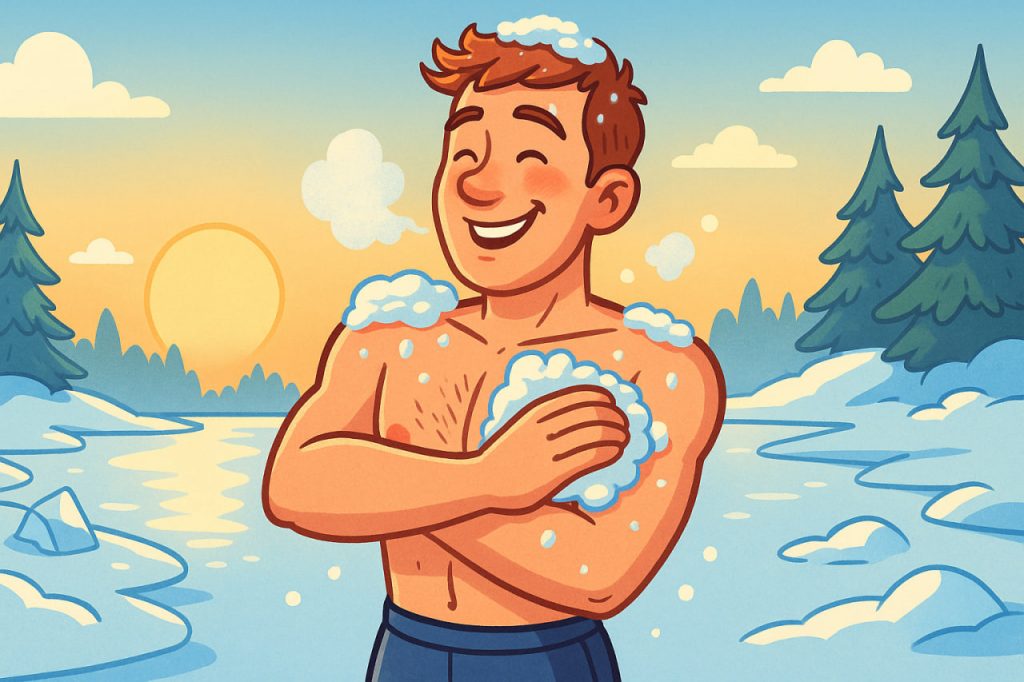Hardening the body — or cold exposure training — is a time-tested method to strengthen the immune system, improve circulation, and increase stress resistance. Popular in many cultures, from Russian ice baths to Finnish sauna traditions, this practice helps the body adapt to temperature changes. However, proper technique and gradual progression are essential to avoid harm.
How Cold Exposure Works
When the body encounters cold, blood vessels in the skin constrict, reducing heat loss and directing blood to internal organs. Over time, the body adapts, learning to regulate temperature more efficiently. This process enhances the function of the autonomic nervous system, strengthens the cardiovascular system, and may improve metabolic balance.
Steps to Begin Safely
- Start Gradually – Begin with short exposure times. End your normal shower with 10–15 seconds of cool water, increasing by 5 seconds daily.
- Use the Contrast Method – Alternate between warm and cold water. This helps train blood vessels and improve circulation.
- Outdoor Adaptation – After becoming comfortable with cold showers, spend brief periods outside lightly dressed (in calm weather). Walking or light exercise during exposure keeps blood moving.
- Regularity – Consistency is key. The body adapts best with daily or near-daily exposure. Irregular practice reduces the benefits.
- Listen to Your Body – Mild shivering is normal, but numbness, pain, or dizziness are warning signs. Stop immediately if you feel unwell.
Physiological Benefits
Regular cold exposure can:
- Strengthen the immune system, reducing the frequency of colds.
- Improve circulation and blood vessel tone.
- Enhance mental resilience by training the body’s stress response.
- Increase metabolism, which may help in weight management.
- Support better mood regulation through the release of endorphins.
When to Avoid Cold Exposure
People with heart disease, hypertension, respiratory illness, or weakened immunity should consult a doctor before starting. Sudden temperature shocks can cause blood pressure spikes or heart strain. Always avoid cold exposure when sick or after heavy meals or alcohol consumption.
Best Practices for Beginners
- Practice at the same time each day to help your body adapt.
- Combine cold exposure with breathing techniques or light exercise for better results.
- After exposure, warm up naturally by moving or dressing warmly — avoid jumping immediately into hot conditions.
Conclusion
Cold exposure can be an excellent way to strengthen the body and mind if done wisely and gradually. The key is not to push limits but to adapt gently over time. Consistent practice enhances resilience, improves health, and fosters a sense of balance between the body and nature.
Interesting Facts
Cold exposure training boosts the body’s brown fat activity, which burns energy to generate heat. Studies show that people who regularly take cold showers have stronger immune responses and better circulation. However, the transition to cold temperatures should always be gradual to prevent shock.
Glossary
- Autonomic nervous system – The part of the nervous system that controls involuntary functions like heartbeat and breathing.
- Vasoconstriction – The narrowing of blood vessels in response to cold.
- Endorphins – Hormones that promote feelings of well-being and reduce pain.
- Metabolism – The process by which the body converts food into energy.


